Best Paint Color for Dark Rooms

No matter how much natural light streams into your home, it never fails that every home has that one space that is just too dark and doesn’t get the light that it should. Many people assume that the best solution is to paint the space a bright white to open it up, but that could actually backfire. Not only is white a very stark color, but it can actually create even less light by reflecting the little natural light that does come into the room.
If you’re thinking of going white, ask yourself one question:
Does the room need light during the day?
If so, white’s definitely not the color that you want. There are plenty of other great colors out there that will brighten up the space and help open things up, giving you options to fit with your color preferences and décor themes. In choosing your colors, you’ll simply want to ensure that you consider the purpose, the direction of the room, the architecture, and the shape of the space. Those elements will all affect how certain colors look throughout the day and in various lighting.
If Not White, Then What?
If you’ve determined that white isn’t going to work in your room, you need to know where to go from here. Dark colors are an option if you want to create a dramatic look in the room. Despite what most people think, painting an already-dark room a dark color isn’t always a bad idea. It can create a cozy space and offer more drama than pastels or brighter colors might.
Of course, warm-toned neutrals are often the preferred choice for low-light spaces. Medium tones are best for brightening up a space, and for when you want to create a more open feel than you might get from a darker shade. Remember, regardless of the shade, to stick with saturated colors, or those that have less black in the base.
The type of room that you’re painting makes a difference in color selection, as well. A bedroom or bathroom would need a different color than a dark hallway, for example. You’re creating different moods in different spaces, so what works in one area might not work in another. Take that into account when choosing your colors. For example, neutrals are better in halls because they can open things up, while a bold, bright color might work better in a small bathroom just to brighten up the space.
Here are some of the best paint options for dark rooms, according to the professionals.
1. Sunshine Yellow
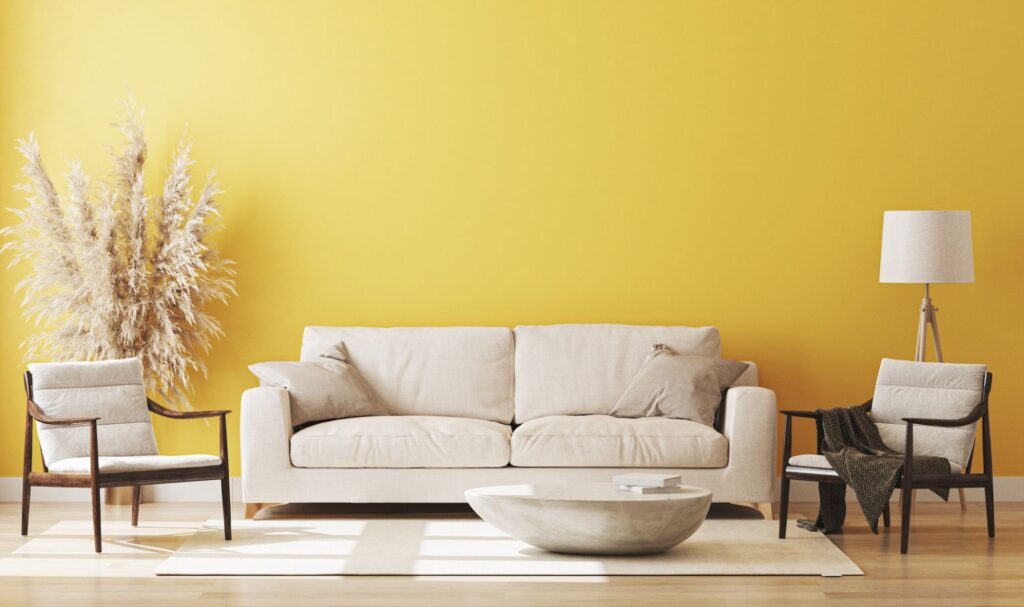
When you have a small bedroom or bathroom with a single window or smaller windows, a bright yellow can recreate the natural light for you and brighten up the space to increase the appearance of its size. Yellow is best with white trim or light wood to create a warm, inviting look in an otherwise dark or cold space.
2. Deep Plum

Bright, saturated purples are great for small spaces when you want something a little bolder. If you’re painting a small lounge or den, you’ll get a cozy finish that livens up the space and can accent just about any decor.
3. Lavender
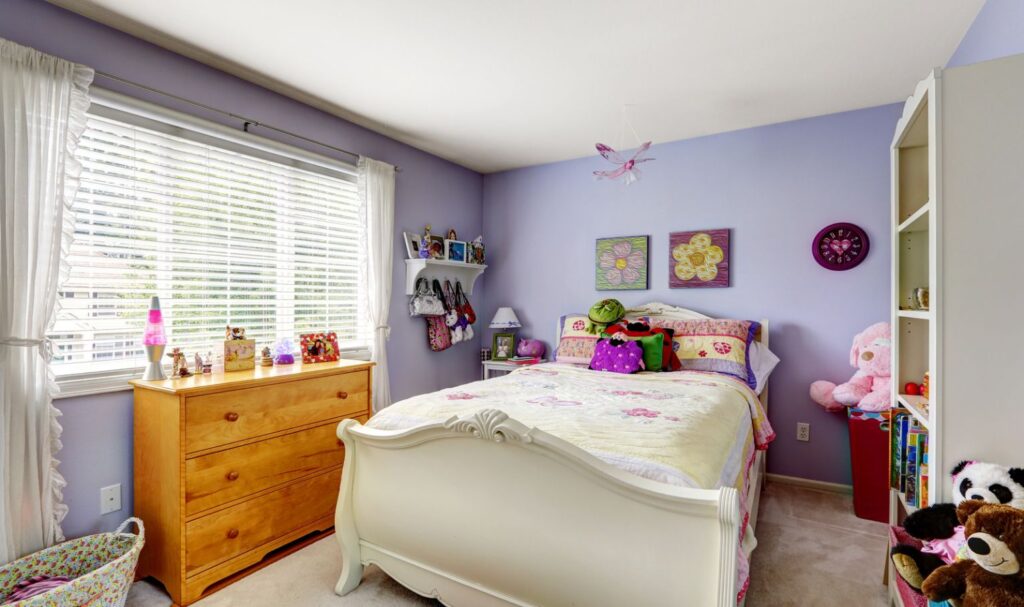
The warm tone of lavender makes it ideal for small spaces. Plus, this color has so many shades and bases, so it doesn’t have to be a super-feminine finish (unless, of course, that’s what you’re going for). There are a number of pastels in the lavender family that have a blue base or a more neutral tone. You can match it with other pastels or accent it with white or gray to add a sophisticated touch.
4. Light Blue
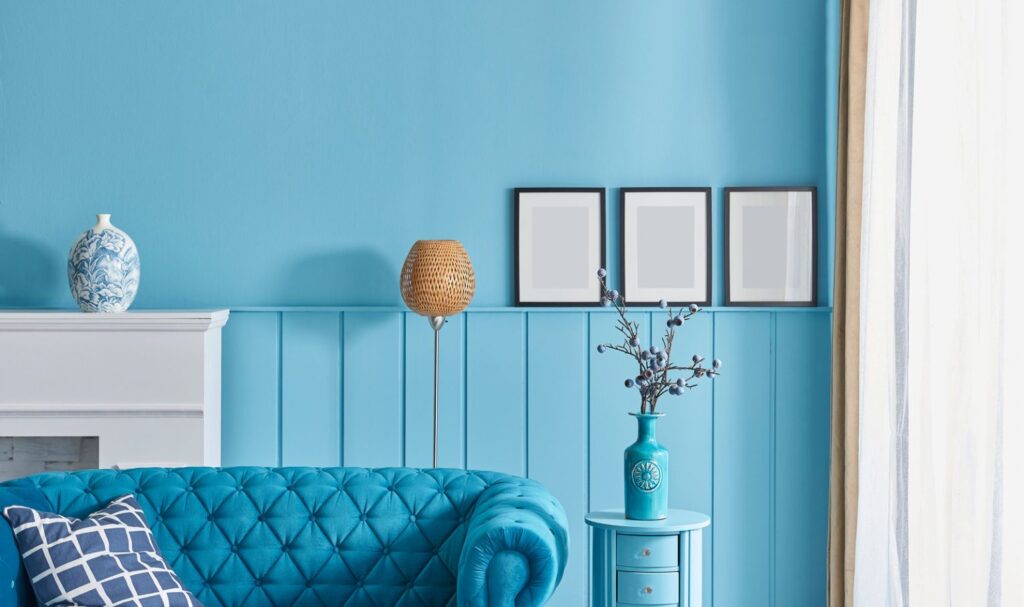
Whether you call it sky, powder, baby, or just plain “light”, this calming shade of blue adds brightness and keeps the room mellow at the same time. Extra-dark corners, bathrooms, and even living rooms that don’t get much light can look great in a simple shade of light blue. Plus, again, you’ve got a variety of hues and saturations to choose from, so you can go as light or as bright as you want.
5. Soft (Light) Gray
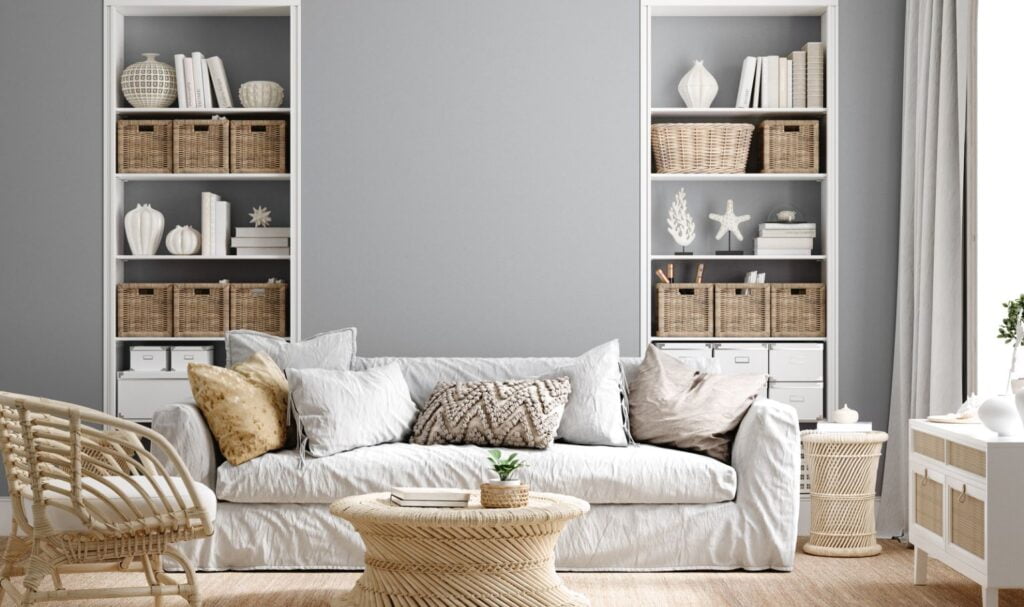
When you’ve already got a dark space, you might think a color like this would be the worst choice. In fact, there are some great shades of gray that can brighten up a room. You can choose tones that have a pink or purple base for additional warmth, or even find shades that include beige or a hint of blue to lighten things up a bit. Avoid the shades with black bases, as those will typically close in an already dark room.
6. Orange
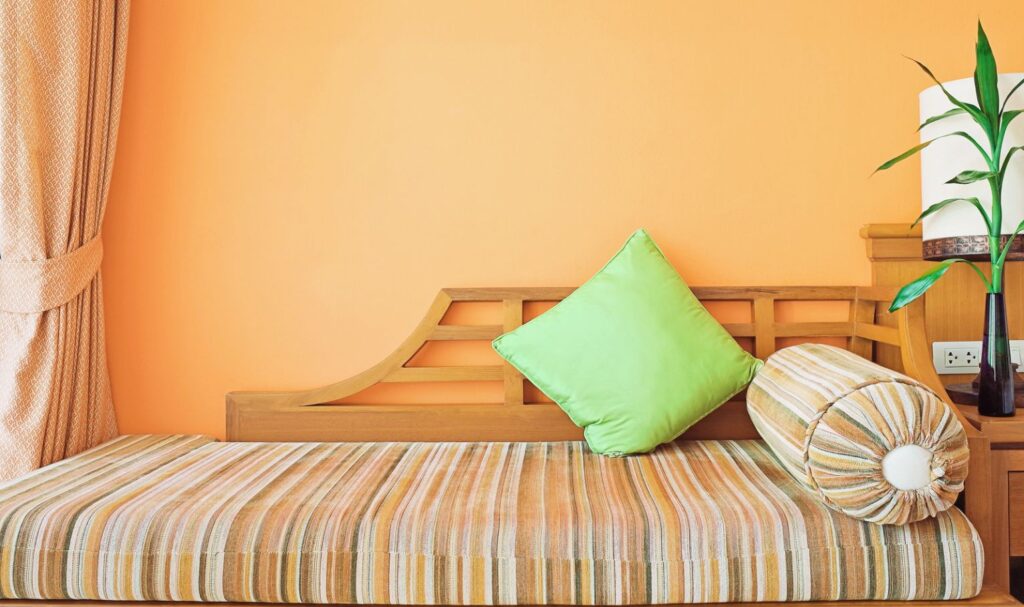
Nobody is referring to neon orange or even standard orange here. However, tones like apricot or a nice pumpkin spice will add light and space to rooms where people frequently gather, such as dining rooms and kitchens. The right shade of orange could even do wonders to brighten up a small bathroom or laundry area. Just be sure to stick with warmer tones for the optimal space enhancement, and avoid anything too bold that results in a more juvenile finish (unless you’re painting a kids’ room, of course!).
7. Beiges and Light Browns
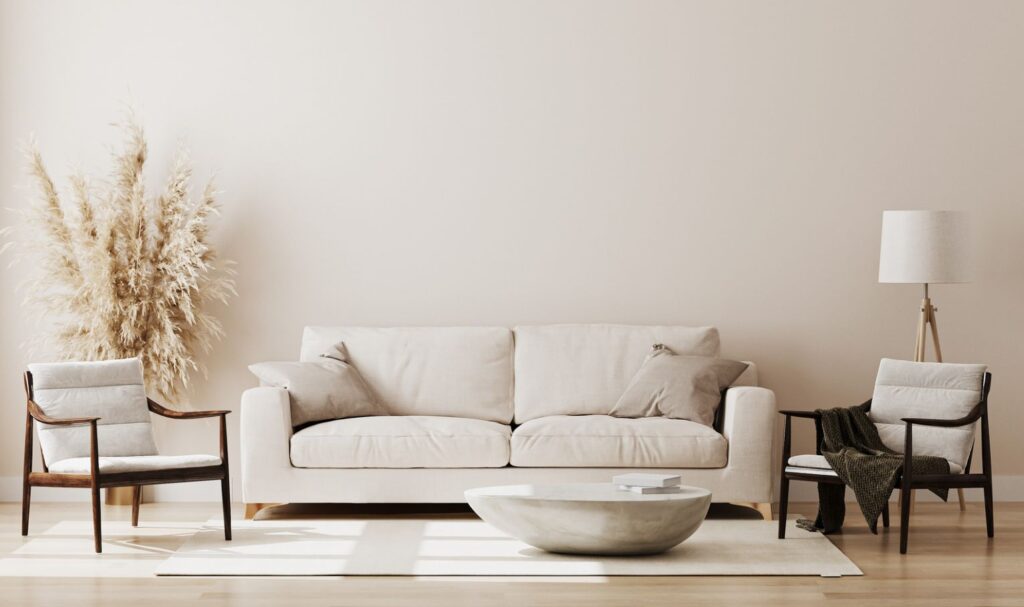
Of course, with a warm base, any shade of beige or light brown should open up a space and still offer a cozy ambiance. These soft, comforting colors are great in bedrooms that are darker or limited in natural light availability. They also make great choices for living rooms, dens, and kitchens that need a little lightening up.
How to Pick the Perfect Interior Paint Colour?
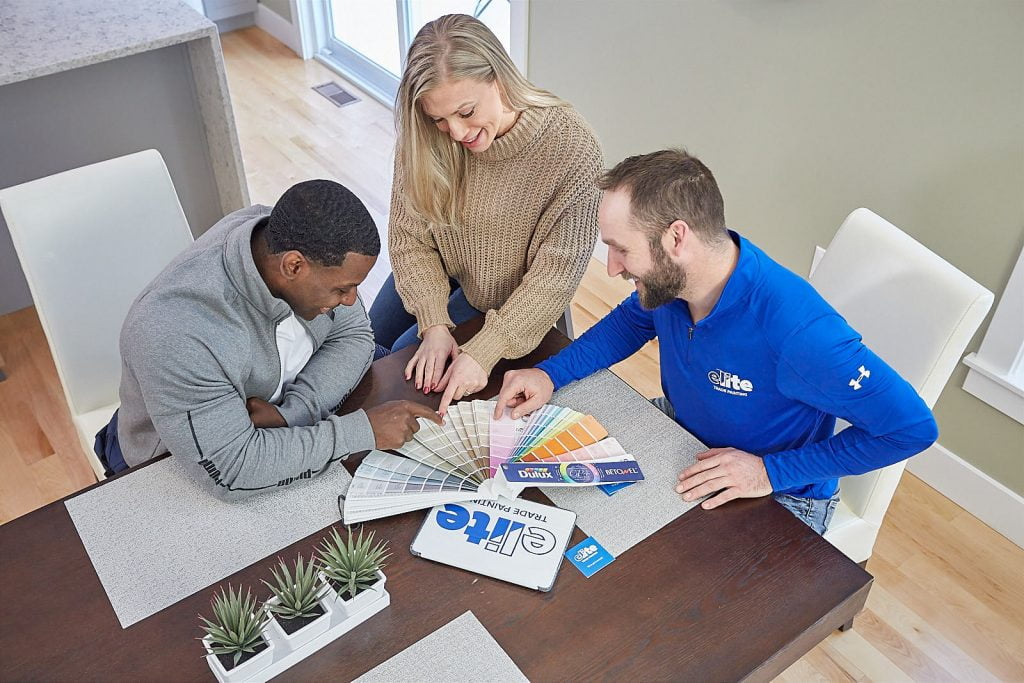
Remember, when you’re looking at paint shades for a smaller space, that it isn’t necessarily the color that creates darkness, but the base. You can quite effectively use bold, bright colors like reds and purples in darker rooms, so long as you find a shade that has a brighter base or warmer tone. If you want bold colors, you don’t have to compromise when you are dealing with small spaces.
This is especially good news when the rest of your home is bright and overstated. The last thing you need is an awkward hall or bathroom that’s a boring shade of taupe because it’s the only color that you were told would work.
You can play it safe with all of the warm pastels and light-toned colors, if you really want. There’s no shame in that, and there are plenty of paint shades out there that will look fantastic in your dark or small space, even if they seem like the drabbest option on the shelf. The great thing about paint is that it offers so much versatility that you can truly create the perfect space with any color in any room, as long as you’re careful about how you do it.
We understand that picking a colour can sometimes be the hardest decision to make. With so many colours to choose, the right choice can seem daunting. We can provide you with interior colour decision-making strategies, tools, and support.
Light Reflective Value (LRV)

Paint has a measurement known as Light Reflective Value (LRV). This value is indicative of how much light the paint color will reflect, and as a result, how light the paint will appear on the wall. This number is measured on a scale from 0 to 100. The higher the number, the lighter the color will look.
What is the Best LRV for Interior Paint?
For example, the darkest black shades will be rated around 5% on the LRV scale. The brightest whites will typically be in the 90-95% range. For general painting, decorators suggest using a paint that has an LRV of 50% or higher, which means the color reflects more light than it will absorb. If you have a darker room, however, you’ll want to find colors that have an LRV of 60% or more.
Don’t Leave It Up to Paint
Paint can’t add light. It can reflect it, and it can offer brightness in an otherwise dark space. However, the best solution for any dark room is to find ways to lighten it up. If there is a lack of natural light because of its facing, or because of available windows (if any), you may not have a lot of options for natural light enhancements. However, you can add more lighting, such as a new floor lamp or overhead light, to help brighten the space.
If there is any landscaping or shrubbery blocking the light coming into the room, clean things up. Consider removing shrubs entirely to open up the space. Get rid of heavy or dark window treatments, too. Stick to sheers or light blinds or shades that aren’t going to darken the room even more.
Finally, choose furniture and accents that are bright and inviting. Stick with lighter colored woods and fabric or carpet colors to help create more light in the space. With all of these elements and the right color of paint, you can make any dark space feel light, bright, and inviting with almost any shade that you choose.
Wrapping Up
When painting dark spaces, remember that it’s not about avoiding bold colors. It’s about avoiding colors with black bases, because those are what absorb all the light. Choose shades that have a warm base or a neutral base for best results. Also, remember to sample and test a few colors before you make a final decision, and to look at the sample in all types of light and at various times of the day so that you can see all the variations that it will create. It may take a little more effort to paint a dark space, but it’s definitely possible to create the perfect look if you keep these things in mind.
 (877) 663-5483
(877) 663-5483 (844) 333-1387
(844) 333-1387



